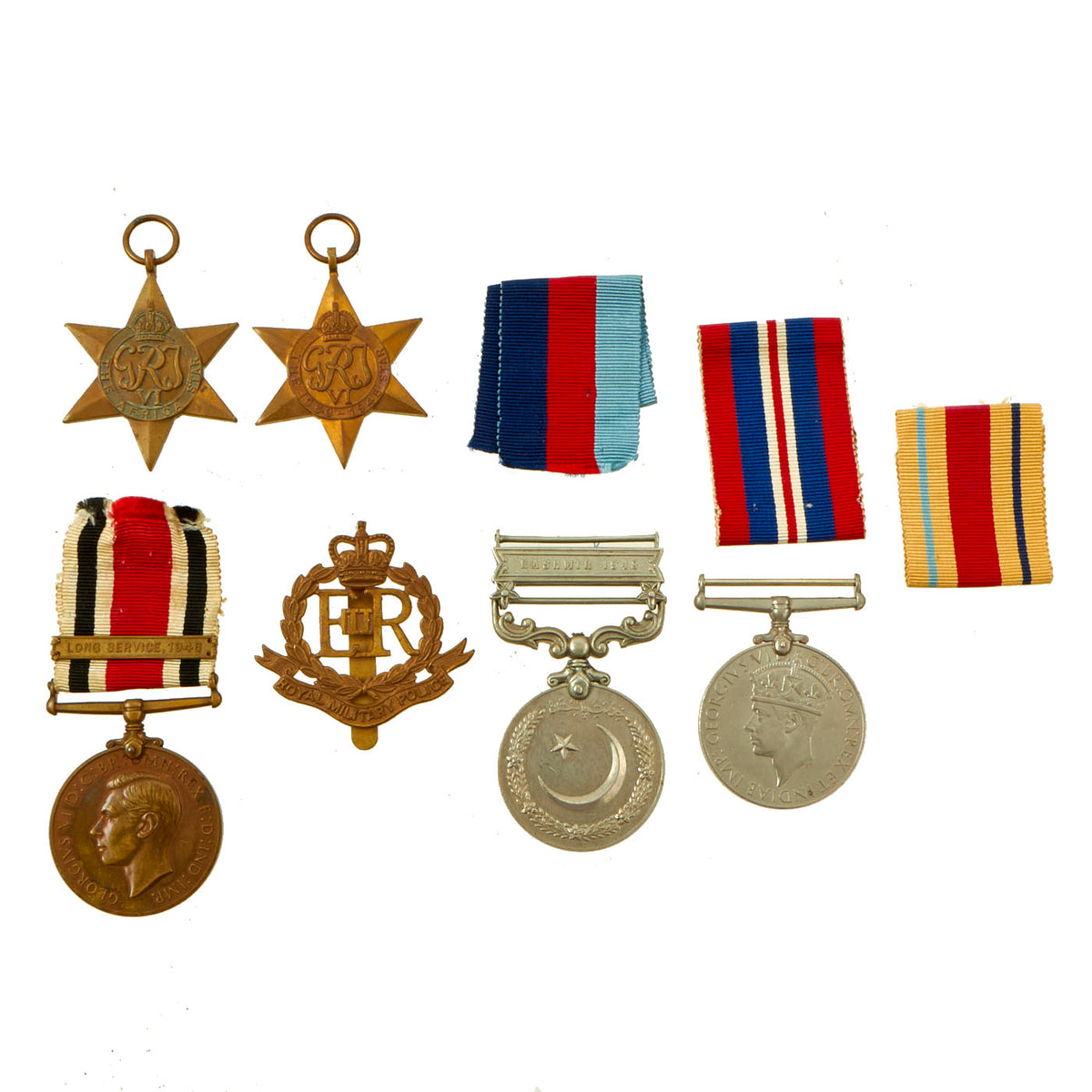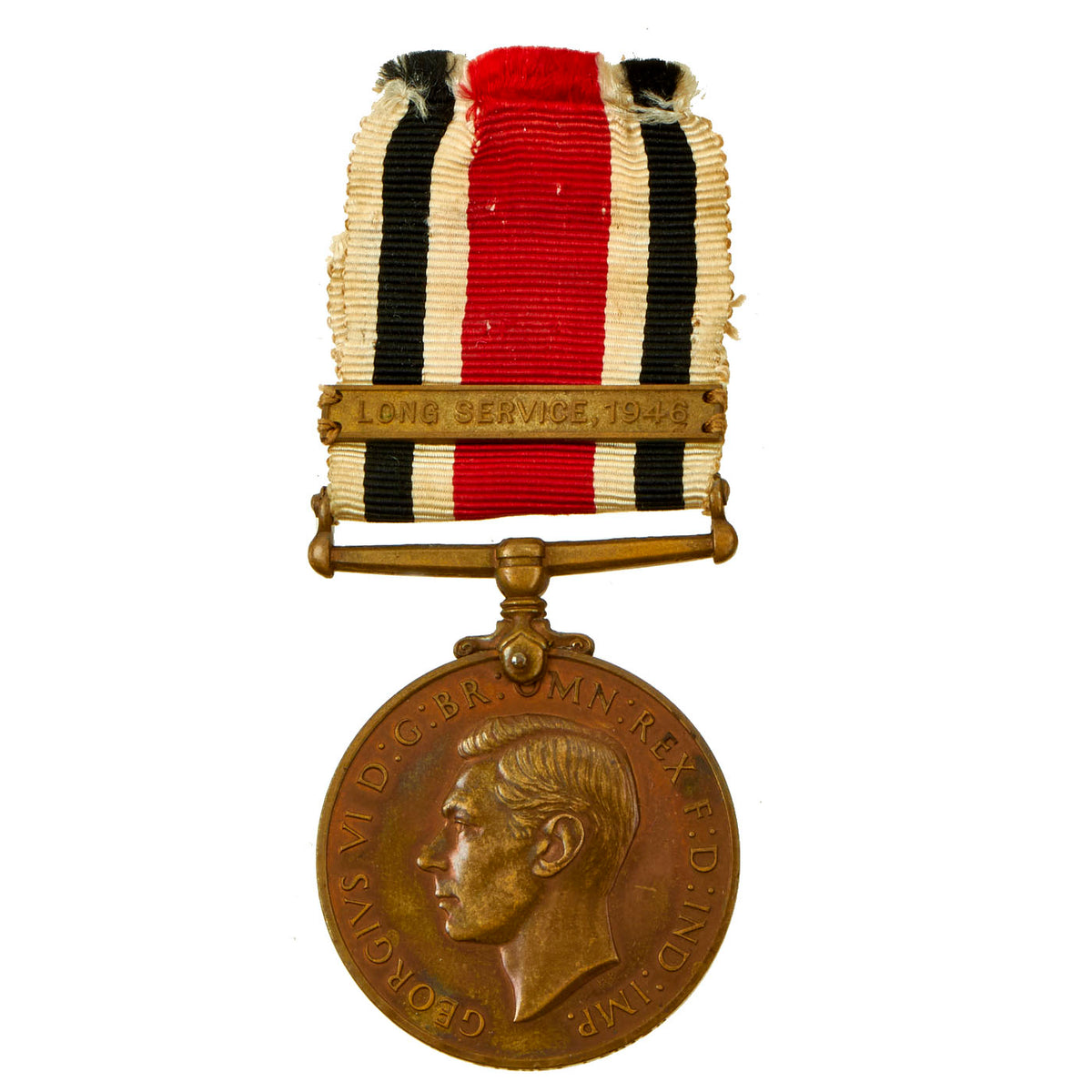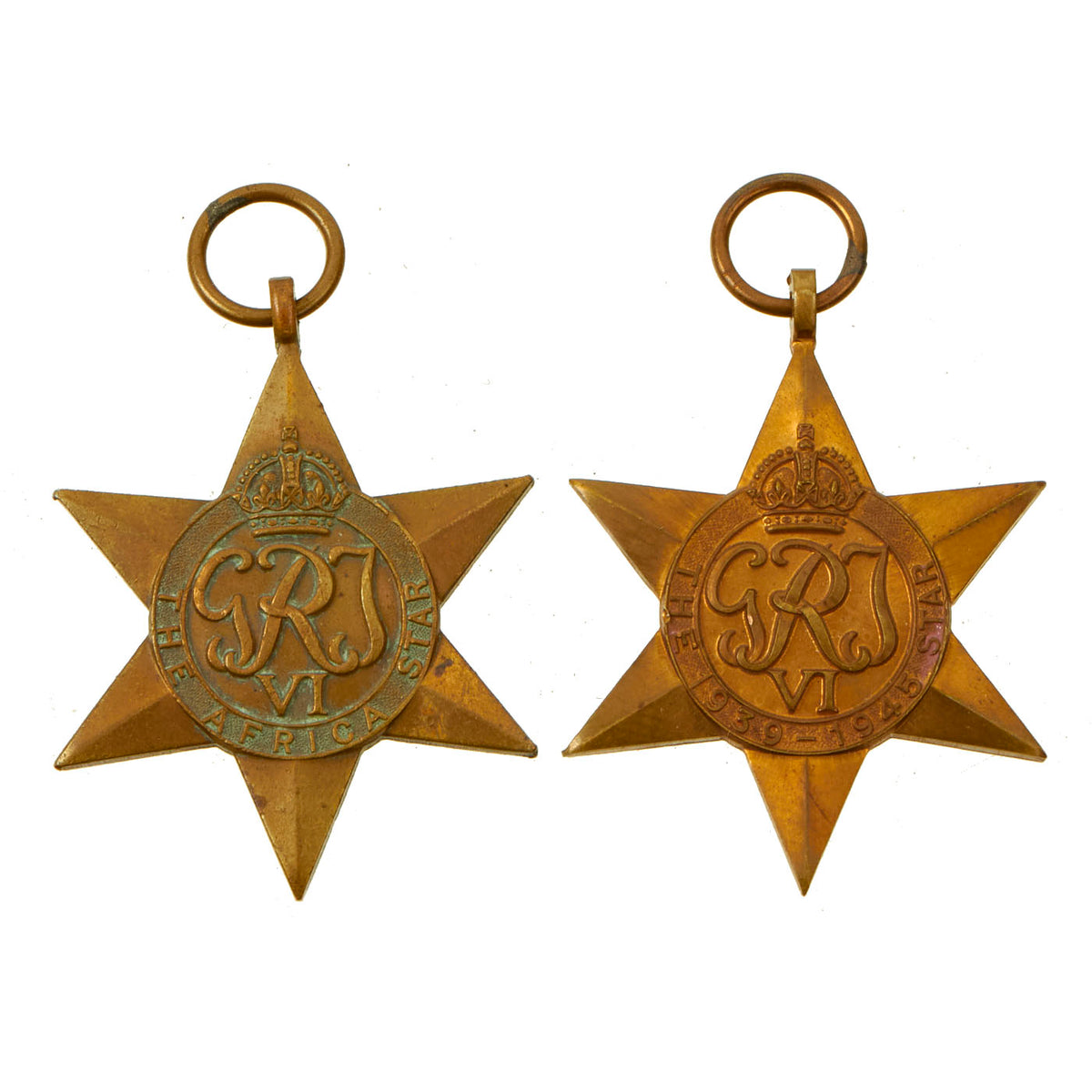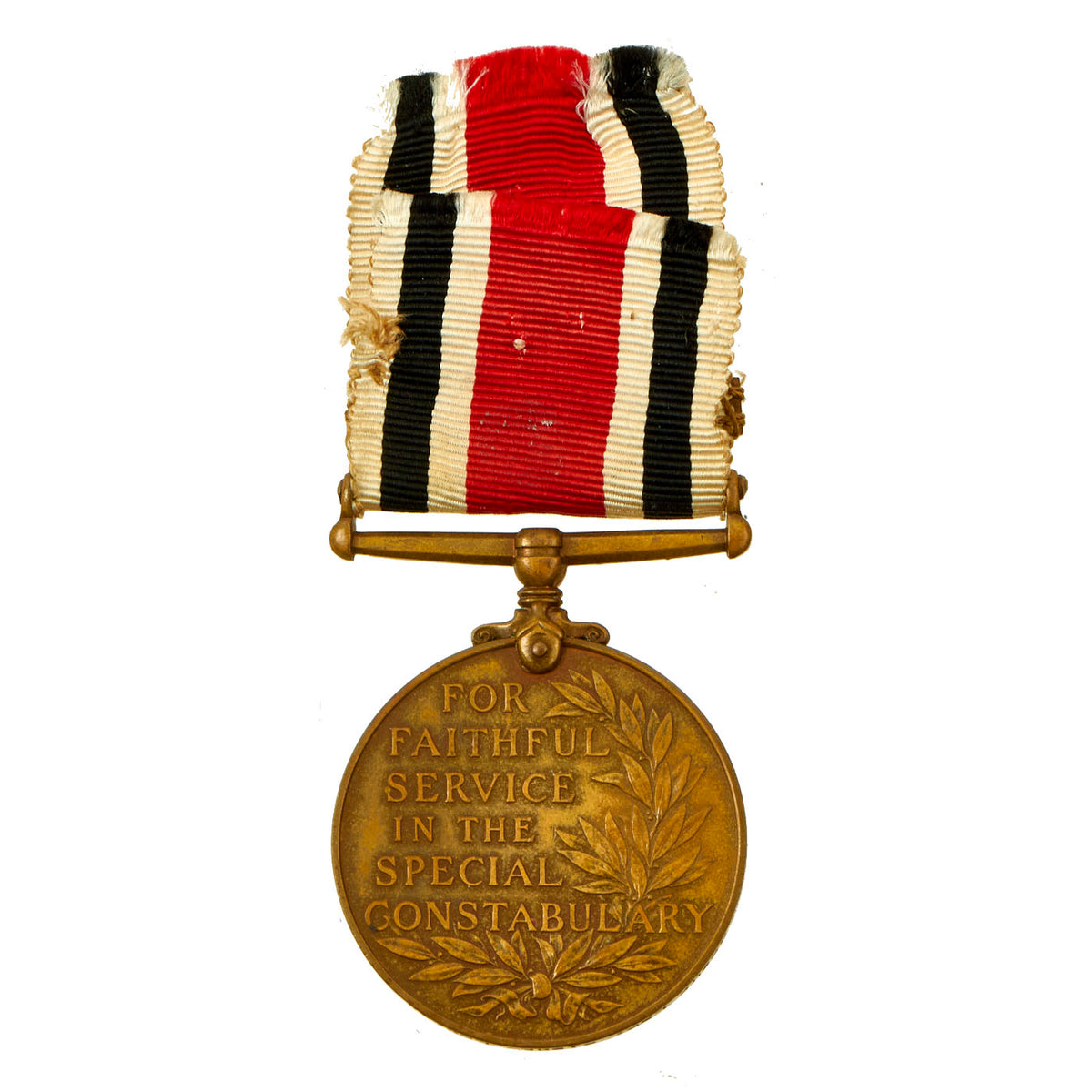Original British WWII to Cold War Era British and Pakistan Medals Lot – 7 Medals Original Items
$ 175,00 $ 70,00
Original Items: Only One Lot of 7 Available. Now this is a rare opportunity! There are 7 genuine British and Pakistani medals in this grouping. This is the perfect lot for the beginner who is interested in medal collecting!
During the 17th and 18th centuries the service of the ordinary British soldier was simply rewarded with a state pension. During this time, due to the suffering and actions of the soldiers on both sides during the English civil war, public opinion of soldiers was quite low. Usually, only the most desperate volunteered for military service and in some cases it was the only alternative to a prison sentence. Public opinion of the British Army slowly began to change after the Napoleonic Wars (1799 to 1815) due to the heroic actions of soldiers and their officers. However, during this time, medals were only given to highly promoted officers and members of the aristocracy for their services.
The first British Army medal awarded to ordinary soldiers was the Waterloo Medal, issued around 1816-17. This was given to every individual British soldier who could prove that they were present during the campaign against Napoleon in which the British Army, alongside their Dutch and German allies, suffered horrific loss and suffering whilst performing feats of heroism. The medal was unique as not only was it the first of its kind but each soldier or officer who received it had their name stamped into the medal, recognising them individually. Around 39,000 of these medals were issued to the men who applied for them. The material chosen for the medal was Silver, which alongside Bronze, would be used widely for many medals in the coming century.
The Medals Included In This Lot:
– The Africa Star (With Unattached Ribbon): The Africa Star is a military campaign medal, instituted by the United Kingdom on 8 July 1943 for award to British and Commonwealth forces who served in North Africa between 10 June 1940 and 12 May 1943 during the Second World War. The obverse has a central design of the Royal Cypher “GRI VI”, surmounted by a crown. A circlet, the top of which is covered by the crown, surrounds the cypher and is inscribed “THE AFRICA STAR”.
– 1939-1945 Star (With Unattached Ribbon): The 1939–1945 Star is a military campaign medal instituted by the United Kingdom on 8 July 1943 for award to British and Commonwealth forces for service in the Second World War. Two clasps were instituted to be worn on the medal ribbon, Battle of Britain and Bomber Command. The obverse has a central design of the Royal Cypher “GRI VI”, surmounted by a crown. A circlet, the top of which is covered by the crown, surrounds the cypher and is inscribed “THE 1939–1945 STAR”.
– War Medal 1939-1945: The War Medal 1939–1945 is a campaign medal which was instituted by the United Kingdom on 16 August 1945, for award to citizens of the British Commonwealth who had served full-time in the Armed Forces or the Merchant Navy for at least 28 days between 3 September 1939 and 2 September 1945. The obverse shows the crowned effigy of King George VI, facing left and signed “PM”, the initials of designer Percy Metcalfe, below the truncated neck of the effigy. Around the perimeter is the legend “GEORGIVS VI D:G:BR:OMN:REX ET INDIAE IMP:” The reverse shows a lion standing wanton on the body of a double-headed dragon. The dragon’s heads are those of an eagle and a dragon, to signify the principal occidental and oriental enemies during the Second World War. At the top, just to the right of center are the years “1939” and “1945” in two lines. The initials “ECRP” of designer Edward Carter Preston are near the rim at the nine o’clock position. Preston also designed the bronze memorial plaque which was presented to the next-of-kin of British servicemen and women who fell during the First World War.
– Pakistani General Service Medal With Kashmir 1948 Bar (No Ribbon): The Pakistan General Service medal with bar ‘KASHMIR 1948’ is often encountered with WW2 Indian medal groupings to soldiers allocated to Pakistan. The bar was awarded for the war between Pakistan and India over the disputed Kashmir territory (also known as the Indo- Pakistan War 1947-48). The medal is 36mm diameter in cupro-nickel – suspension and the bars are very similar in design to the British India General Service Medals. Obverse is the Pakistan star and crescent within a Jasmine wreath. The Urdu inscription ‘Service to Pakistan’ is at the top. The reverse is plain with the central area being defined by a circle.
– Special Constabulary Long Service Medals (1946 Issue): The Special Constabulary Long Service Medal is a long service medal awarded in the United Kingdom to members of the Special Constabulary who have completed a specified period of service. Established in 1919 by King George V, the medal was initially created to reward members of the Special Constabulary for their service during World War I.
The medal may be awarded to Special Constables who are recommended by the Chief Officer of Police of the department in which they serve so long as they have served for at least nine years, and willingly and competently discharged their duty as a Special Constable. Years of service during World War I from 1914 to 1918 and service during World War II from 3 September 1939 to 31 December 1945 are counted as triple.
Name/Engraving On The Medal:
GROUP LDR. SIDNEY LENTON
– Post WWII Royal Military Police Cap Badge: The Royal Military Police (RMP) is the corps of the British Army responsible for the policing of army service personnel, and for providing a military police presence both in the UK and while service personnel are deployed overseas on operations and exercises. Members of the RMP are often known as ‘Redcaps’ because of the scarlet covers on their peaked caps and scarlet coloured berets.
The RMP’s origins can be traced back to the 13th century but it was not until 1877 that a regular corps of military police was formed with the creation of the Military Mounted Police, which was followed by the Military Foot Police in 1885. Although technically two independent corps, they effectively functioned as a single organization. In 1926, they were fully amalgamated to form the Corps of Military Police (CMP). In recognition of their service in the Second World War, they became the Corps of Royal Military Police on 28 November 1946. In 1992, the RMP amalgamated into the Adjutant General’s Corps (AGC), where they form part of the AGC’s Provost Branch.
Non-commissioned members of the RMP receive their basic training as soldiers at the Army Training Center in Pirbright. They then receive further training at the Defense School of Policing and Guarding (DSPG), previously known as the Defense College of Policing and Guarding (DCPG).
The regimental march of the RMP is “The Watchtower” or “Hoch Heidecksburg”, originally a German Army marching tune from 1912 by Rudolf Herzer. The RMP motto is Exemplo ducemus, Latin for “By example shall we lead”.
These are all wonderful examples that come more than ready for further research and display!
Fast Shipping with Professional Packaging
Thanks to our longstanding association with UPS FedEx DHL, and other major international carriers, we are able to provide a range of shipping options. Our warehouse staff is expertly trained and will wrap your products according to our exact and precise specifications. Prior to shipping, your goods will be thoroughly examined and securely secured. We ship to thousands clients each day across multiple countries. This shows how we're dedicated to be the largest retailer on the internet. Warehouses and distribution centres can be located throughout Europe as well as the USA.
Note: Orders with more than one item will be assigned a processing date depending on the item.
Before shipping before shipping, we'll conduct a thorough inspection of the items you have ordered. Today, the majority of orders will be delivered within 48 hours. The delivery time will be between 3-7 days.
Returns
The stock is dynamic and we cannot completely manage it because multiple stakeholders are involved, including our factory and warehouse. So the actual stock may alter at any time. It's possible that you may not receive your order once the order has been made.
Our policy is valid for a period of 30 days. If you don't receive the product within 30 days, we are not able to issue a refund or an exchange.
You can only return an item if it is unused and in the same state as the day you received it. You must have the item in its original packaging.
Related products
Uncategorized
Uncategorized
Uncategorized
Uncategorized
Uncategorized
Uncategorized
Armored Burgonet Helmet & Polearm from Scottish Castle Leith Hall Circa 1700 Original Items
Uncategorized
Uncategorized
Uncategorized
Uncategorized
Uncategorized
Uncategorized
Uncategorized
Uncategorized
Angolan Rebel 1970s era 60mm Inert Display Mortar from Angolan Civil War Original Items
Uncategorized
Uncategorized
Uncategorized
Uncategorized













































































